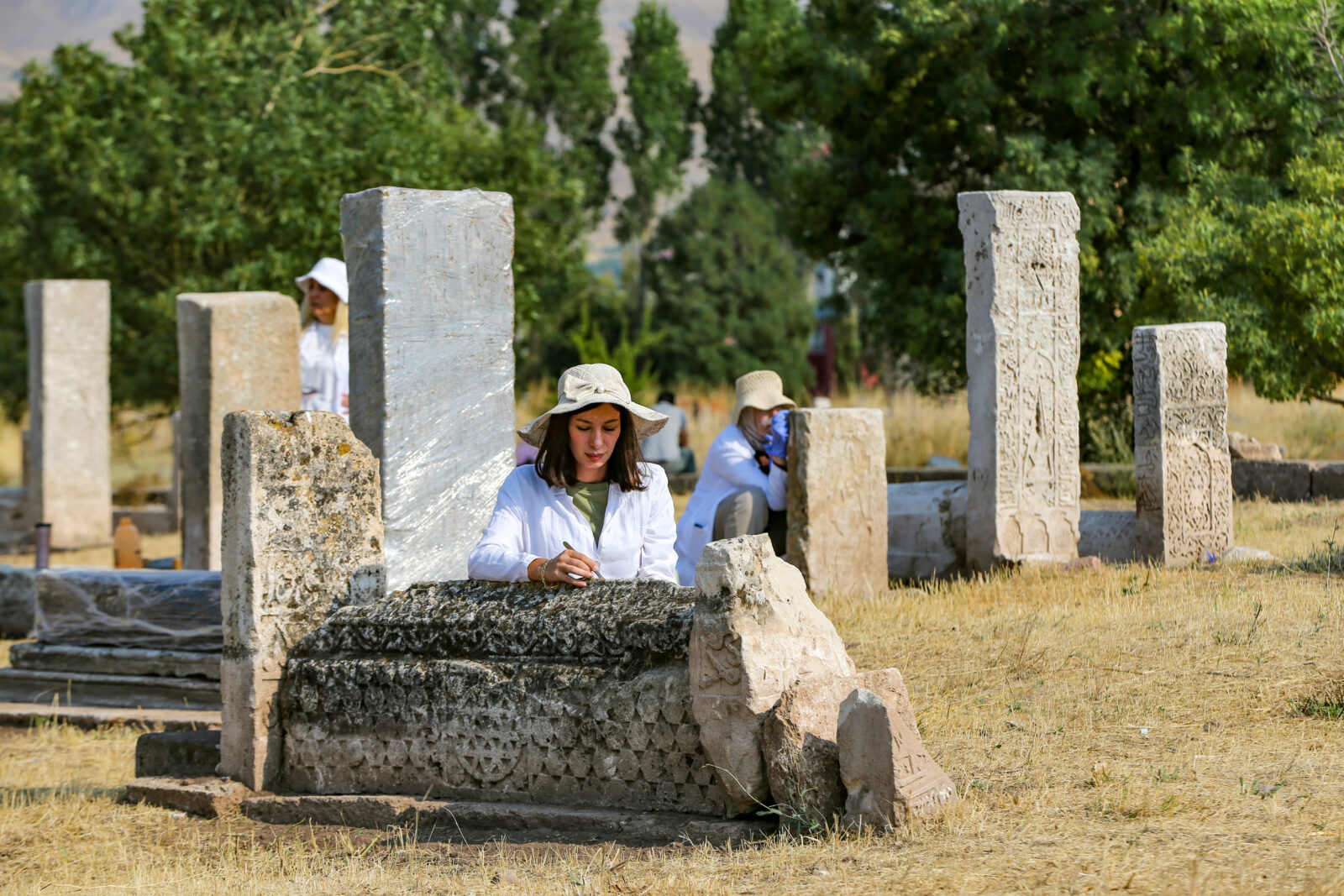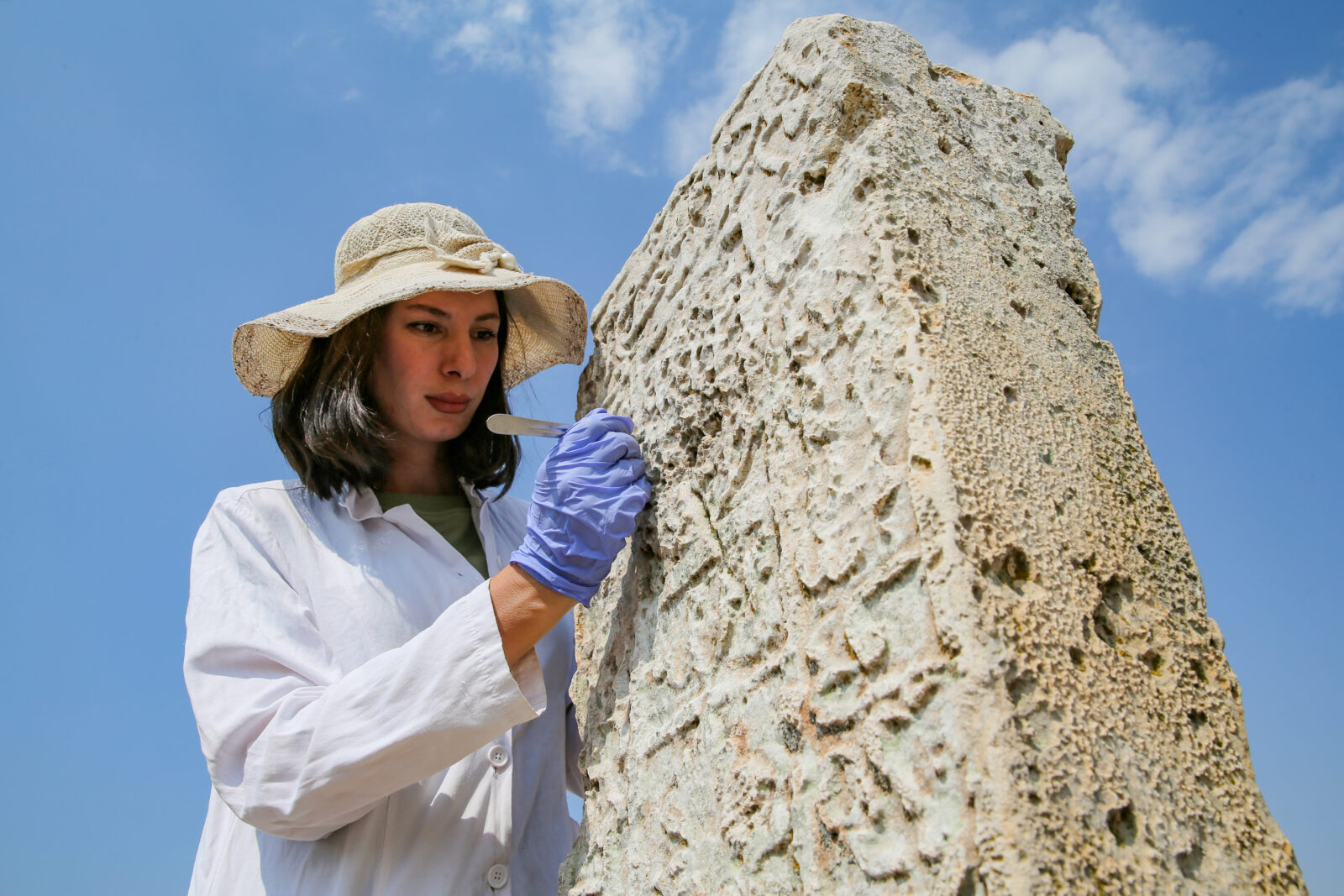
Ongoing excavation and restoration efforts in the historic Seljuk Cemetery in the Gevas district of Van, are continuing to reveal important traces of Turkish-Islamic heritage. Known as Türkiye's second-largest Turkish-Islamic cemetery, the site is yielding new gravestones while existing ones are being meticulously restored.
This year, six sarcophagi and a tombstone have been unearthed. The excavations are being conducted with the permission of the Ministry of Culture and Tourism, under the leadership of the Van Museum and the scientific supervision of Associate Professor Ercan Calis from the Art History Department at Van Yuzuncu Yil University (YYU).

Rector of Van YYU, Professor Hamdullah Sevli, closely examines the ongoing work at the Seljuk Cemetery.
Sevli noted that this cemetery in Gevas is Türkiye’s second-largest Turkish-Islamic burial ground, following the one in Bitlis’ Ahlat district.
He stated, "The restoration work at the cemetery involves cleaning and restoring gravestones that are broken or covered in lichens. Sarcophagi and tombstones that have remained underground are being carefully unearthed."
Highlighting the unique motifs found on the newly discovered gravestones, Sevli said, "On one of the sarcophagi of a child's grave, there is a motif of a bow and arrow. Such motifs have not been seen before in Turkish-Islamic cemeteries. We aim to complete the work at the Seljuk Cemetery quickly and pass it on to future generations. This cemetery, along with Akdamar Island and the Halime Hatun Mausoleum, is like an open-air museum. Since the work began, we have seen an increase in interest from European tourists, which shows the significance of what we are doing."

Associate Professor Ercan Calis, the scientific advisor to the excavations, mentioned that the inscriptions on the six sarcophagi and the tombstone, which were uncovered from a depth of one meter this year, are now being deciphered.
"The motifs on the gravestones surprised us," said Calis. "On one of the gravestones we identified recently, we saw the use of a chovgan motif for the first time. The motifs of lamps and sunbursts with salbekli details are used extensively. These motifs are common in Turkish-Islamic works, but their unique application in this cemetery is something we have never encountered before."
Calis also noted that the use of a high-pressure washing machine for the first time this year has made it much easier to clean the lichens from the stones and significantly speed up the work.
"Normally, cleaning a stone would take about a week, but with this machine, we have reduced that time to half an hour. In this way, we are trying to pass on our cultural heritage to future generations without causing any damage." he added.
The work at Van's Seljuk Cemetery continues to bring to light important traces of Turkish-Islamic history, with great efforts being made to preserve this valuable heritage for future generations.